- Termites
- Termites
- Queen of termites
- Termite workers
- Termites
- Termites
- Termite nest
- Termite nest
Termites - herbivorous insects belonging to the termite infraorder. These insects, although remotely resemble antsbut are close relatives cockroaches. About 3106 species and 331 genera are described, including fossil termites. Scientists suggest that termites stood out from the cockroach detachment in the Paleozoic.
Appearance
Let's consider how termites look on the example of representatives of various castes. Working insects have:
- light color;
- soft chitin-coated body;
- underdeveloped thoracic region;
- a large head equipped with powerful mandibles.
The length of their bodies is from 2 mm to 1.5 cm. The eyes of workers and soldiers are poorly developed or absent. On the head are threadlike antennae with a large number of segments. By their length, the age of the insect is judged.
The size of termites varies depending on which caste an individual belongs to. If the workers are quite small, then the termite soldiers have a large (2 cm) body and a large head with such powerful mandibles that they are not able to eat on their own and feed their working termites. In some species, the mandibles are reduced, but there is an outgrowth on the head, from which the nosed soldier “shoots” the scaring secret of special glands at the enemy.
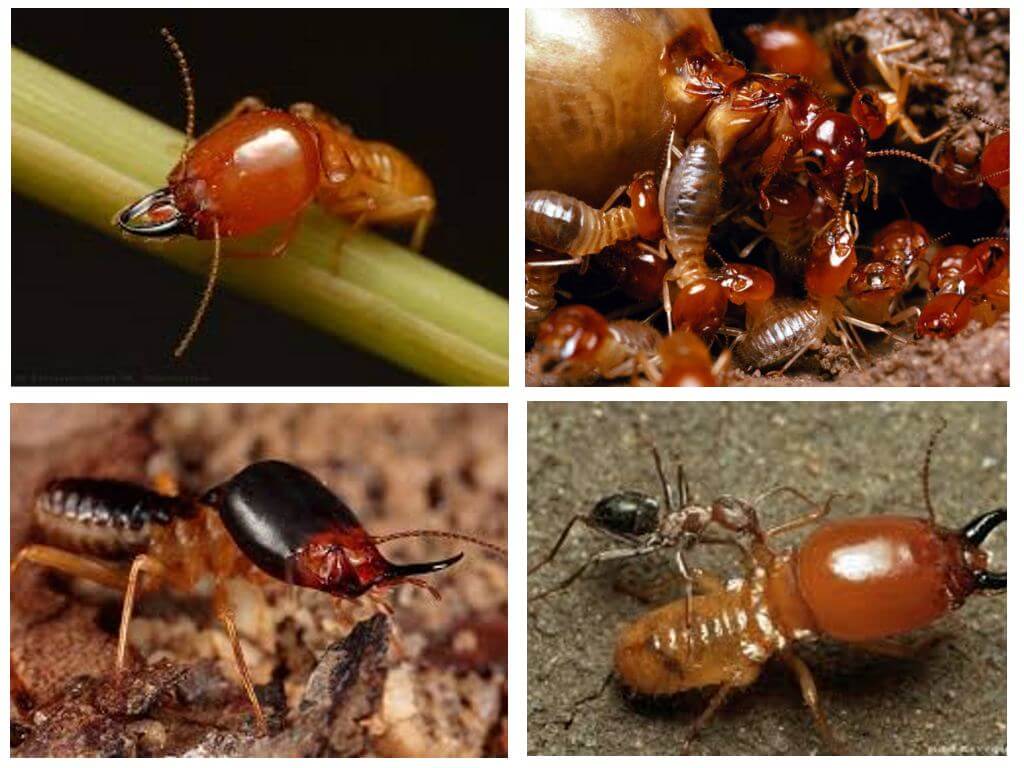
Winged termites have two pairs of facet eyes and two simple eyes. They are distinguished from others by the presence of wings, which, after a settling summer, the insect breaks off along a special seam. Wings (their 2 pairs) are large, but weak and insects more often “plan” than fly. Winged termites can mate and breed. Workers and soldiers are deprived of this opportunity, since they lack the gonads.
Interesting!
The winged "princes" and "princesses" can replace the dead king or queen. During the summer, they are far related by air currents and form colonies far from their native termite mound. Initially, the “royal persons” cope with everything on their own - they dig a shelter, look after the laying of eggs, feed the larvae. But as soon as the "children" grow up and divide into soldiers and workers, they take care of the "parents".
The king and queen differ in size. The termite queen in evolutionarily advanced species is 10 times larger than working insects and is very similar to uterus of ants. A huge number of eggs formed stretches the abdomen so much that the female herself cannot move. If necessary, dozens of working ants carry it into another chamber.
In primitive species, the queen has slightly more representatives of other castes. The termite queen lives 10-20 years. Scientists believe that special enzymes with antioxidant properties are responsible for this “longevity”.
The size of the "king" does not exceed the size of the working insects. He is constantly in the same cell with the queen and the main function of the male is the fertilization of the female.
Representatives of the rhinotermitid family have a frontal pore or fountain on their heads, from which anxiety pheromones are released from representatives of this termite family, informing the rest of the nest inhabitants about the danger. Some species of soldiers have the same time, but a drop of poison.“Butting” the head of the enemy, the defender applies poison to the surface, paralyzing the aggressor.
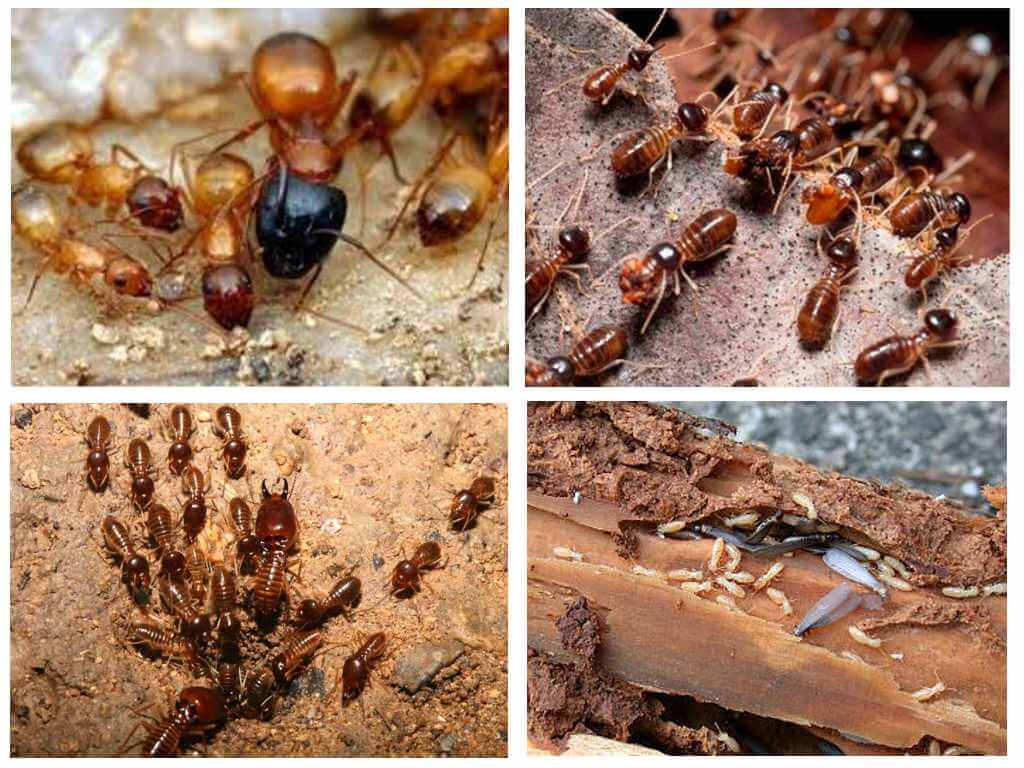
Different types of termites have their own ratio of workers and soldiers. Typically, the number of soldiers in the termite does not exceed 3%. But the network of species that have no soldiers at all or their share is 12-15%. Japanese scientists have found that, unlike other types of insects with a social organization, the X chromosome gene is responsible for dimorphism in the termite family. It is he who determines who the larva will become in the future. But this feature is characterized by advanced species. In primitive species, what the individual will become in the future is determined by nutrition and special pheromones.
Like any insect, the termite has three pairs of running legs. The color of insects can vary even in one termite. Inside a complex system of moves, “multi-colored” insects are found - from whitish to dark brown.
Reproduction and development cycle
The termite queen mates with the king many times throughout her long life. In the summer season, workers make cracks in the walls through which only 2-3 insects can squeeze simultaneously. Travelers describe the flight of winged insects as termite "smoke" that rises above the structures.
"Princesses" attract their future kings with the secret of the abdominal glands. Then the pair “digs” a mink, the entrance to which is sealed. It is in such a "royal" chamber that pairing occurs. In lower species, the female lays hundreds, rarely thousands, of eggs per week.
But there are species whose queen fecundity is amazing. In odontothermis obesus, the female lays up to 86,000 eggs per day. The Queen of Macrotermis lays more than 10 million eggs per year. Termites in the photo surround the queen.
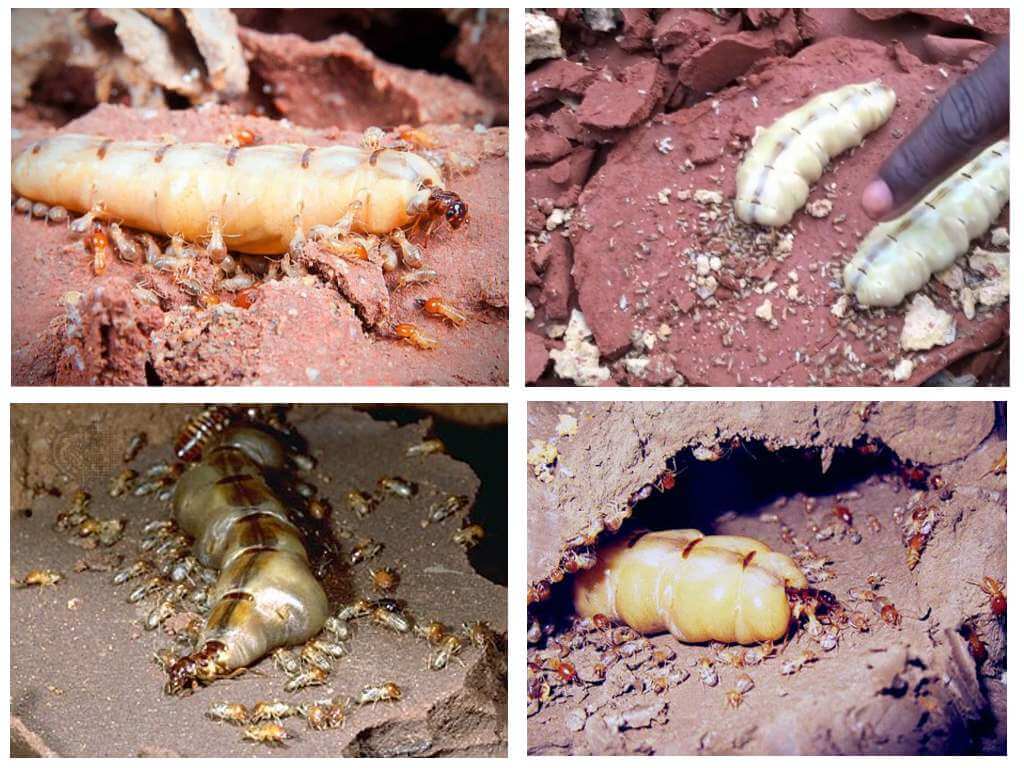
Worker insects feed and care for it, drag eggs, collect droplets of secretion from the abdomen, and soldiers guard it.
Interesting!
On the surface of the queen's body stands out a special secret rich in pheromones. It is eaten by working termites and carried to remote parts of the underground labyrinths. Some scholars believe that it is this secret that "unites" the family. Others believe that in this way control over the number of winged individuals is exercised - they do not appear until the colony matures, which happens after 2-3 years.
Workers and soldiers, inherently, underdeveloped individuals, "frozen" at the larval stage. They do not develop a reproductive system. The secret emitted by the queen does not allow all termites to turn into insects capable of breeding. When the queen is aging, the amount of secret decreases and, under certain conditions, working termites can begin to multiply.
From fertilized eggs appear larvae:
- in workers, a soldier after molting, the larva becomes an adult insect;
- after the second molt, the larva or nymph is divided into the next stage;
- the nymph is larger than the larva and has wing rudiments on the thoracic segments;
- before becoming an adult, the larva passes from 3 to 4 cycles of molting;
- there are several ages and nymphs, at the end of transformations the insect grows long wings.
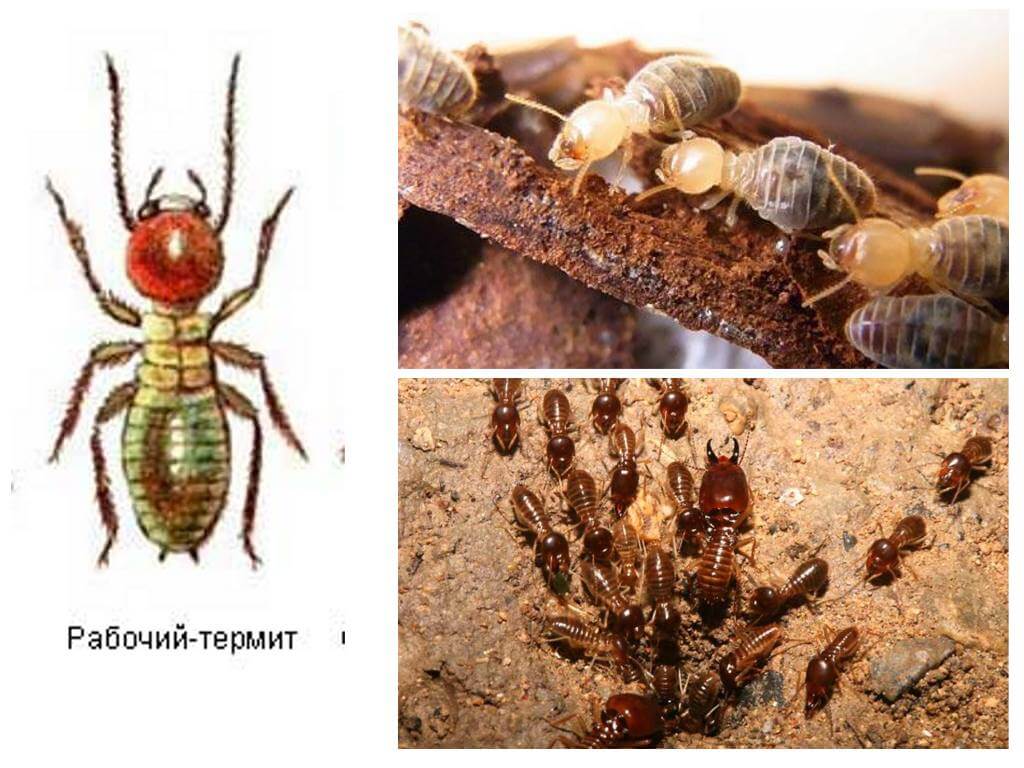
Working termites feed the larvae with the secret of their salivary glands or with the crushed spores of the mushrooms that they grow on their plantations. Termite breeding occurs as a result of fertilization, but in the absence of males, females can breed asexually (parthenogenetic). All born individuals are females.
Interesting!
If the queen suddenly dies, then winged females or nymphs can take on their role in reproduction. The latter retain all the features of immatureness. They are called nymphoids. Some types of termites in one nest may have several breeding pairs. This happens if the termite is very large. Scientists have found that the presence of working termites stimulates the laying of eggs.
It is also surprising that in certain conditions working termites can also multiply.To turn into a reproductive species, they need a long period of time - 30-40 days. They are called ergatoids. Scientists in the laboratory crossed ergatoids with nymphs and ergatoids. The percentage of castes in the offspring was different.
The table shows the results of the experiments:
| Females | Males | Type of breeding | Offspring |
|---|---|---|---|
| nymphoids | - | parthenogenesis | 100% female nymphs |
| ergatoids | - | parthenogenesis | 50% died, 50% female nymphs |
| nymphoids | nymphoids | sexual | 50% female workers, 50% male workers |
| nymphoids | ergatoids | sexual | 50% female nymphs, 50% male workers |
| ergatoids | nymphoids | sexual | ¼ died, ¾ equally - nymph males, working males and females |
| ergatoids | ergatoids | sexual | In equal parts of females and males nymphs, females and males - workers |
This diversity is explained by the diploidy of male and female termites. While the colony develops, winged individuals do not form. Energy is spent on the production of workers who build, care for, clean.
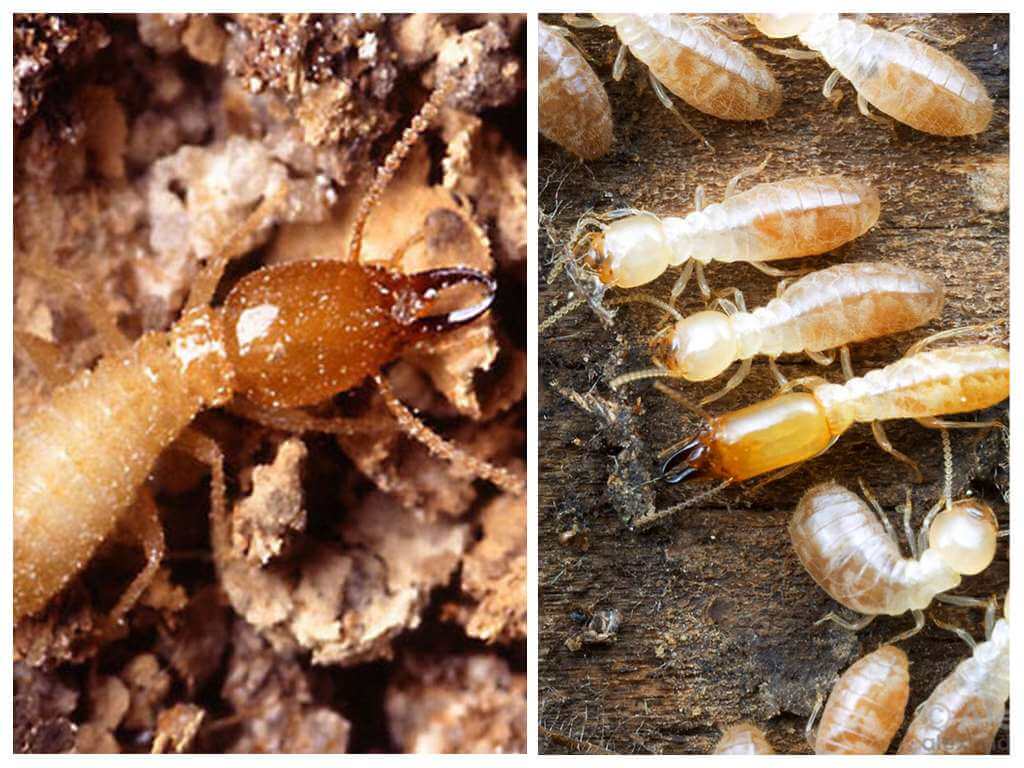
The dry-wood and damp-wood termite squad is characterized by the absence of adult working termites. Their role is played by pseudo-ergates. This group of termites is also called "false" workers. For a long time, the larvae molt, remaining working individuals. But it happens that after some time the pseudo-ergat becomes a soldier.
Power Features
The basis of the diet of many types of termites is cellulose. In the digestive system of working insects, a special kind of flagellate symbiont microorganisms lives, which can destroy cellulose. It is the working termites that feed the soldiers and the queen. Basically termites feed on dead branches and tree stumps, fallen leaves, humus. Some species of tropical termites feed on living plants, damaging tea bushes, cereals. But in one of the most progressive species - Termitidae, symbionts are absent and the mechanism of assimilation of cellulose in them is still unclear.
But it turned out that termites are eating not only cellulose. They plant mushroom gardens where they grow a special kind of mushroom. They drag pieces of wood and leaves into their nests. All thoroughly crushed and "planted" spores of mushrooms. This group of termites belongs to Macrotermitinae.
Mycelium of fungi destroys inedible lignin, transforming it into a more easily digestible component. Termites eat old parts of gardens, absorbing mycelium, spores and food enriched with various nutrients. For larvae, gardens are the main food provider.
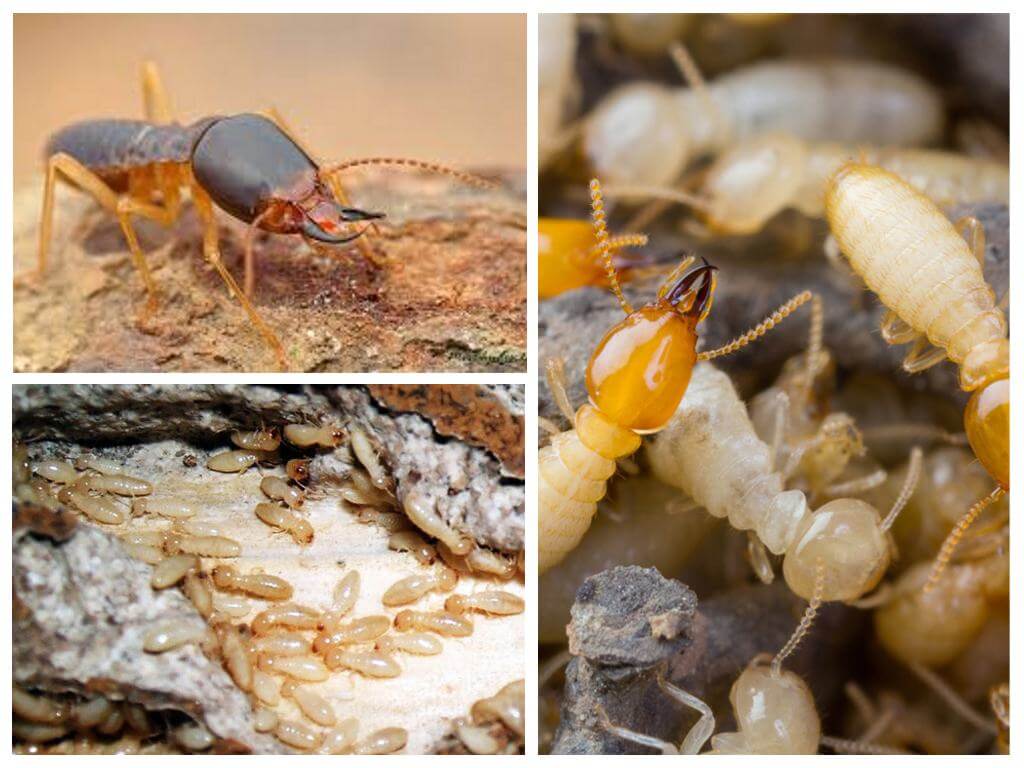
Interesting!
The famous A. Brem told his comrades how an Arab, who had fallen asleep near a termite maker, woke up completely naked - the termites ate all his clothes. At the end of the 18th century, termites were accidentally brought to St. Helena, which completely ate the city of Jamestown.
Termites that are found in the CIS are less "gluttonous." But the huge damage caused by the Ashgabat earthquake is due to the fact that 25% of the houses were corrupted by termites, which led to their collapse.
Due to the fact that termites are very sensitive to temperature, humidity and sunlight, they rarely appear on the surface, gnawing tree trunks, logs of the house from the inside, leaving it completely intact. The annual damage from termites is calculated in huge amounts. Different types of termites build different nests not only in shape, but also in localization.
Different types of nests
Termites live in large families, arranging nests in the soil, trunks and roots of trees or build complex engineering structures - termite mounds. The largest termite mound towered above the surface of the earth to a height of 13 meters. In India, a dilapidated termite mound was found inside of which such a large animal as an elephant could fit.
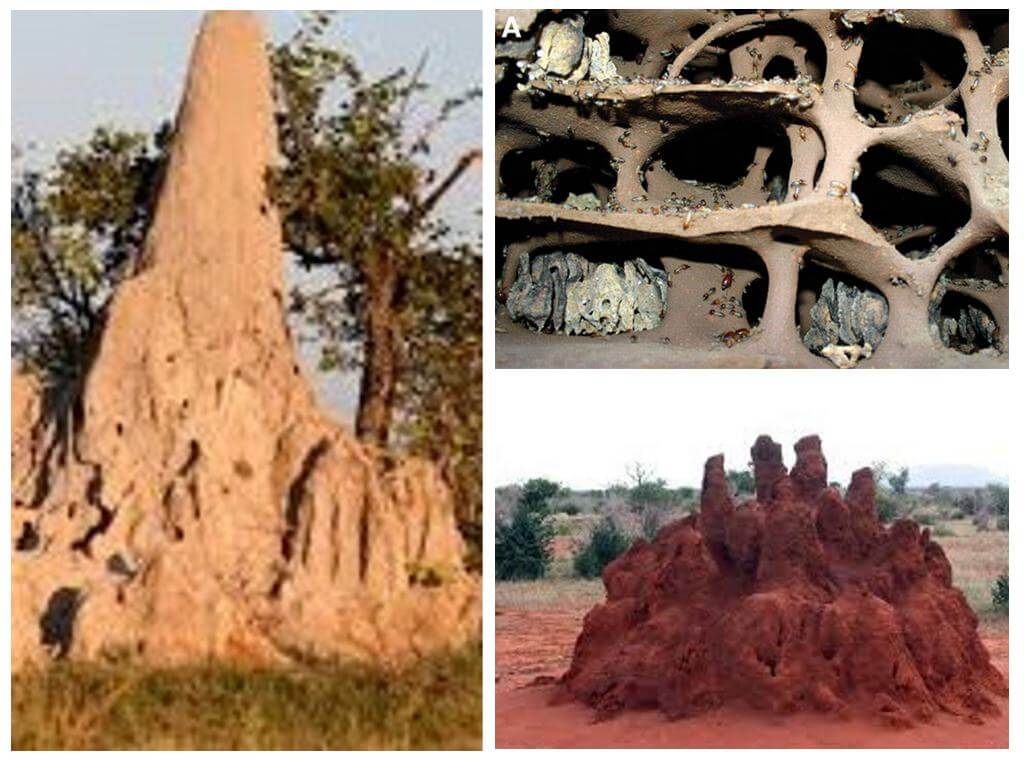
The main part of the nest is underground. Tunnels, galleries, cameras represent a complex system in which only termites can navigate. Enemies breaking through quickly lose direction and fall into the soldiers «paws’.There are chambers for storing food, maternity chambers, "rooms" for larvae.
Interesting!
The most well-protected, humid, warm and ventilated is the chamber in which the queen and the king live. The layout of all the nests is such that their mansions are located in the center of the underground "city". Inside the chamber, the “royal couple” is always located head east, and the end of the abdomen is oriented west. Scientists isolated the queen’s cell and no matter how it was rotated, the couple occupied the previous position.
External walls are made of a mixture of saliva, particles of wood, clay and excrement. This composition, hardening in the sun is so strong that it is difficult to give a pick or scrap. Watertight walls, mushroom-shaped “canopies”, visors protect from tropical showers, which often happen in the latitudes where termites live.
In addition to the protective function, the outer part of the termite plays the role of air ducts, supports a strictly defined temperature and humidity. Workers, depending on the time of day, weather and season, expand or narrow the air ducts, adjusting the temperature up to 1 ° C.
Special “water carriers” deliver moist soil from the depths. Describing the termites of the Ivory Coast, Swiss M. Luscher noted that they deliver moisture from layers located at a depth of 10-12 meters. But this is not the limit - in South Africa, termites penetrate for water to a depth of about 40 meters.
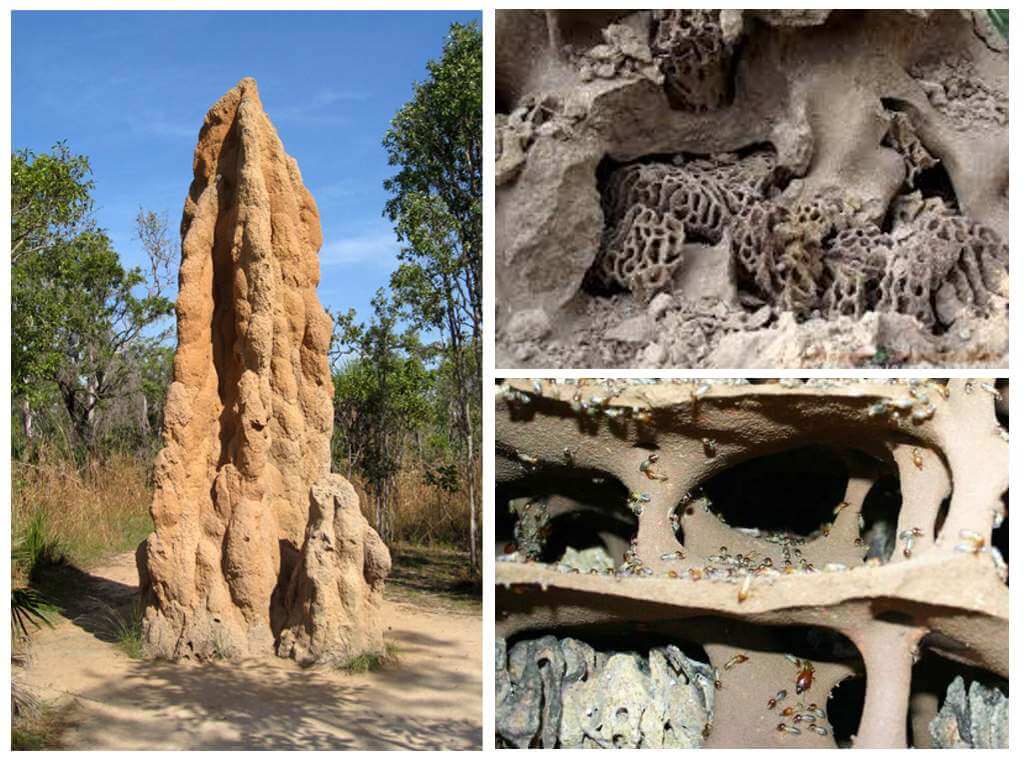
In the center of the structure, 20-30 cm from the soil surface, insects arrange a “nursery”, laid out with soft material in which the larvae are located. There are egg storage rooms on both sides, and the Queen’s apartments are located directly under the larval chamber. Even lower are the warehouses and pantries, which are connected by a system of moves with power sources.
The underground nests of the African termite Apicotermes are connected by a complex system of ducts that provide insects with oxygen even at a depth. In Australia, insects build the so-called "compass" structures. These flat termite mounds are always oriented north-south, which prevents the nest from overheating.
It is worth destroying the upper part of the termite mound, as numerous residents draw from its bowels to damage. All work is done from within. And only a small handful of soldiers bravely protect the formed “entrance” from the outside, attacking ants, lizards and other amateurs to profit from termites. Workers quickly close the gap from the inside, and the daredevils remain outside the termite to die.
Interesting!
There are many incredible stories about termites that have little in common with reality. Descriptions of these insects are in the novel by S. Lem, Mine Reed, J. Verne. They are portrayed as malicious, attacking everything and everything insects with huge jaws. In fact, terminators often live together with their inhabitants as “tenants” - termite phages. It can be beetles, small animals and birds. They seek shelter from the weather and predators under the protection of reliable termite walls.
In I. Khalifman’s book “Password of crossed antennas” about termite life, it is written so exciting and such incredible facts that you involuntarily begin to admire these tiny whitish creatures.
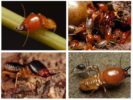
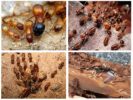
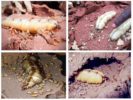
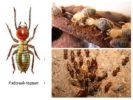
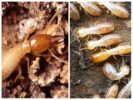
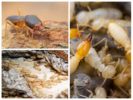
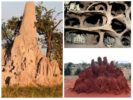
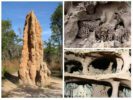




I did not even suspect that there are so many types of termites.
I read that they are gnawing at monuments of architecture in Venice and Rome.
The fact that in the tropics and in South America I knew them completely. I saw them in travel books and in the old program “Around the World”. But the fact that they climb north is simply amazing. All "global warming."
And why not appear in the near future among our forests such "buildings"? We poison ourselves with all sorts of "exhausts" - soon some insects will remain.
And if they cross with the Prussians? Relatives after all. Then you won’t smoke them. They will sharpen everything they get to.
It was interesting to read. I have never seen termites.We do not have them. I always thought that the most intelligent bees and ants.
Interesting - who wins whom? Termites are not very large and soft, and ants are aggressive, biting. Especially in the tropics. I read that there the red ants of the bull are gnawing. How do their termites withstand?
Yes. Moreover, both soldiers and workers are blind. And the ants, in my opinion, are sighted. For any ants will win.
In the depths of termite mounds, they do not need eyes. And the ants will probably just get lost in the dark - they don’t see anything!
It’s good that we don’t have the south. To all the Colorado beetles, cockroaches and other nastiness, we still did not have enough termites.